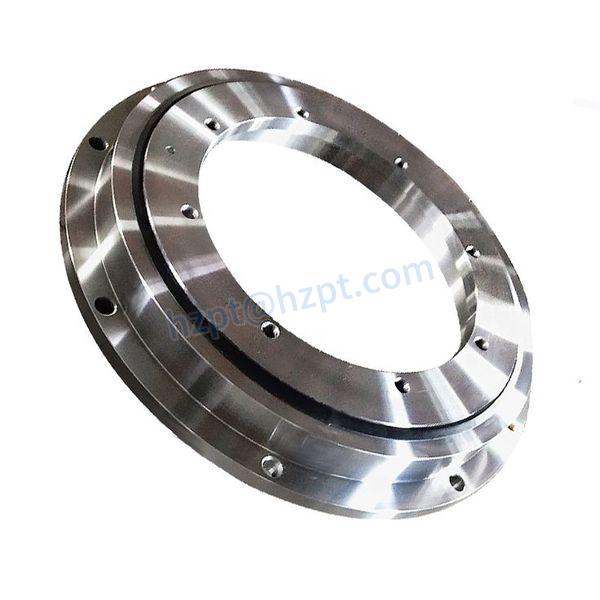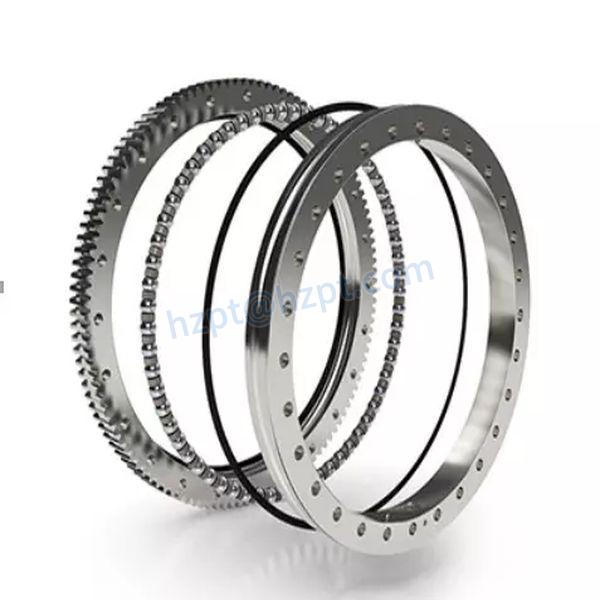Product Description
Product Description
|
Product series |
1. Single Row Four Point Contact Ball Slewing Bearings. |
|
Outside Diameter |
300 – 5000 mm |
|
Gear Options |
External gear |
|
Brand Name |
FH |
|
Raw material |
50Mn, 42CrMo |
|
Certificate |
ISO9001:2008, SGS |
|
Payment Terms |
L/C,T/T,Western Union |
|
OEM/ODM |
Available |
|
Packaging Details |
1:Filling with rust-proof oil |
/* January 22, 2571 19:08:37 */!function(){function s(e,r){var a,o={};try{e&&e.split(“,”).forEach(function(e,t){e&&(a=e.match(/(.*?):(.*)$/))&&1
| Standard or Nonstandard: | Standard |
|---|---|
| Feature: | High Speed, Vacuum, Antimagnetic, Cold-Resistant, Corrosion-Resistant, Heat-Resistant |
| Sealing Gland: | Sealed On One Side |
| Samples: |
US$ 1/Piece
1 Piece(Min.Order) | Order Sample Free samples
|
|---|
| Customization: |
Available
| Customized Request |
|---|
.shipping-cost-tm .tm-status-off{background: none;padding:0;color: #1470cc}
|
Shipping Cost:
Estimated freight per unit. |
about shipping cost and estimated delivery time. |
|---|
| Payment Method: |
|
|---|---|
|
Initial Payment Full Payment |
| Currency: | US$ |
|---|
| Return&refunds: | You can apply for a refund up to 30 days after receipt of the products. |
|---|

How do Slewing Bearings Contribute to the Smooth Rotation of Cranes and other Heavy Machinery?
Slewing bearings play a vital role in ensuring the smooth and efficient rotation of cranes and other heavy machinery that require controlled movement. Their design and functionality are specifically tailored to handle the unique challenges posed by such applications. Here’s how slewing bearings contribute to the smooth rotation of cranes and heavy machinery:
- Load Handling:
Crane operations involve lifting and moving heavy loads. Slewing bearings are designed to carry substantial axial, radial, and moment loads simultaneously. This load-handling capacity allows cranes to lift and transport heavy objects with precision.
- Smooth Rotation:
Slewing bearings provide a smooth interface between the upper structure (superstructure) and the lower structure (substructure) of the machinery. This allows for controlled and precise rotation of the upper structure, enabling cranes to maneuver smoothly during lifting, loading, and unloading operations.
- Efficient Torque Transmission:
During crane rotation, torque generated by the motor is transmitted through the slewing bearing to the upper structure. The bearing’s design ensures efficient torque transmission, minimizing energy losses and facilitating smooth rotation even under heavy loads.
- Low Friction and Wear:
Slewing bearings are engineered to minimize friction and wear. This reduces the energy required for rotation and prevents premature wear that could affect the bearing’s performance and longevity.
- High Stiffness:
Slewing bearings exhibit high stiffness, which contributes to the stability of the machinery during rotation. This stiffness ensures minimal deflection and maintains precise alignment, essential for safe and controlled movement.
- Uniform Load Distribution:
The raceway design of slewing bearings promotes uniform load distribution among rolling elements. This prevents stress concentrations and uneven wear, enhancing the bearing’s durability and contributing to smooth operation.
- Slow and Controlled Movement:
Crane operations often require slow and controlled rotation, especially when positioning heavy loads. Slewing bearings facilitate this type of movement, allowing operators to make precise adjustments.
- Customization for Specific Applications:
Slewing bearings can be customized to match the specific requirements of different crane designs and applications. This customization ensures optimal performance and longevity in various operational scenarios.
In summary, slewing bearings are essential components that enable the smooth and precise rotation of cranes and heavy machinery. Their load-carrying capacity, low friction, high stiffness, and ability to transmit torque efficiently contribute to the reliable and controlled movement required for various lifting and loading operations.

What are the Signs of a Damaged or Worn-out Slewing Bearing that Requires Replacement?
Identifying the signs of a damaged or worn-out slewing bearing is essential for preventing potential failures and ensuring equipment reliability. Here are common indicators that a slewing bearing may require replacement:
- Unusual Noise:
If you notice grinding, clicking, or any abnormal noises during operation, it could be a sign of wear or misalignment in the slewing bearing.
- Increased Vibration:
Excessive vibration or shaking during rotation could indicate misalignment, damage, or uneven wear in the slewing bearing.
- Irregular Movement:
If the machinery exhibits irregular or jerky movement instead of smooth rotation, it might be due to a damaged slewing bearing.
- Uneven Load Distribution:
Uneven distribution of loads can lead to accelerated wear on specific sections of the bearing, causing premature failure.
- Abnormal Heat Generation:
If the slewing bearing becomes excessively hot during operation, it may suggest friction, misalignment, or lack of proper lubrication.
- Excessive Play or Clearance:
Too much axial or radial play in the bearing can indicate wear, misalignment, or component fatigue, requiring inspection and potential replacement.
- Leakage of Lubricant:
If lubricant leaks from the bearing or seals, it may signify damage to the sealing mechanism or an internal issue that needs attention.
- Visible Wear or Damage:
Inspect the bearing for visible signs of wear, corrosion, pitting, or other forms of damage. Cracks, dents, or deformation are clear indicators of potential problems.
- Reduced Performance:
If the machinery’s performance deteriorates, such as decreased rotation speed, reduced load capacity, or increased power consumption, it could be due to a failing slewing bearing.
- Increased Maintenance Frequency:
If you find yourself needing to perform more frequent maintenance or repairs on the bearing, it might indicate that the bearing is nearing the end of its service life.
- Manufacturer’s Service Life:
Consult the manufacturer’s guidelines for the expected service life of the slewing bearing. If the bearing is approaching this limit, it’s advisable to consider replacement.
If any of these signs are observed, it’s important to consult with experts and consider replacing the slewing bearing to prevent further damage and ensure the safe and efficient operation of machinery.

Can you Explain the Differences Between Single-Row and Double-Row Slewing Bearings?
Single-row and double-row slewing bearings are two common configurations with distinct characteristics. Here are the key differences between them:
- Design:
A single-row slewing bearing consists of one row of rolling elements positioned between the inner and outer rings. In contrast, a double-row slewing bearing has two rows of rolling elements.
- Load-Carrying Capacity:
Double-row slewing bearings generally have a higher load-carrying capacity compared to single-row bearings. The presence of two rows of rolling elements enables them to handle heavier axial, radial, and moment loads.
- Stiffness:
Double-row bearings offer higher stiffness due to the additional row of rolling elements. This stiffness can be advantageous in applications where precise positioning and resistance to deflection are crucial.
- Compactness:
Single-row slewing bearings are typically more compact and have a smaller profile compared to double-row bearings. This compact design can be advantageous in applications with limited space.
- Cost:
Single-row slewing bearings are generally more cost-effective compared to double-row bearings. The increased complexity and higher load capacity of double-row bearings can result in higher manufacturing costs.
- Applications:
Single-row slewing bearings are suitable for applications with moderate loads and rotational requirements, where compactness is important. Examples include small cranes, excavators, and material handling equipment. Double-row slewing bearings are often used in larger and heavier machinery, such as construction equipment, wind turbines, and heavy-duty cranes.
- Performance Trade-offs:
While double-row bearings offer higher load capacity and stiffness, they may also introduce higher friction and slightly reduced rotational efficiency compared to single-row bearings due to the presence of additional rolling elements.
In summary, the choice between single-row and double-row slewing bearings depends on factors like load requirements, available space, and desired stiffness. Each configuration has its own advantages and trade-offs, allowing engineers to tailor their selection to the specific needs of the application.


editor by CX 2024-05-07
by
Leave a Reply